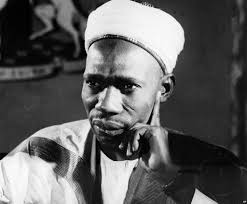Political activities started in Nigeria long before independence. Lots of efforts were made by the three political regions, namely the northern, western and eastern regions, to give flesh to the political framework.

Their works form the basis for many of the systems in practice today. Between 1960 and 1963, the Nigerian government was headed by Nnamdi Azikiwe as the Governor General, while Abubakar Tafawa Balewa was the Prime Minister.
Elections for these offices were held in 1959 and three political parties participated in it. These political parties were the National Council of Nigeria and Cameroons (NCNC), the Northern People’s Congress (NPC) and the Action Group (AG).
The NCNC was controlled by the Igbos, the tribe dominating the Eastern Region; it was led by Nnamdi Azikiwe. The NPC was controlled by the Hausa-Fulani from the north. The party was led Ahmadu Bello. The AG on the other hand was controlled by the Yorubas of the Western Region. They were led by Obafemi Awolowo.
During the 1959 election, no political party was able to win majority votes. This prompted the NPC to work together with the NCNC to form a unity government.
Nnamdi Azikiwe reigned as President from 1963 to 1966 when the military took over the reign of government. Tafawa Balewa also reigned till 1966 as Prime Minister and he was killed that same year.
The NCNC was forced to split with the NCP due to disagreement over the 1963, an exercise the Igbos believed was manipulated to give the northerners more population and therefore more representation at the Federal Parliament.
The NCPC was then forced to join a faction of the AG that was led by Obafemi Awolowo. The two parties then formed the United Progressive Grand Alliance (UPGA). The NCP on the other hand joined together with the other fraction of the AG to form the Nigerian National Democratic Party (NNDP).
Some igbo army officers plotted a coup against the civilian government on January 16, 1966. This brought Johnson Aguiyi Ironsi to power as military head of state. A counter-coup however occurred in July 1966 that led to the killing of Aguiyi Ironsi and a number of other military officers.
This brought Yakubu Gowon to power. Yakubu Gowon was the military head of state all through the Nigerian Civil War. He remained as C-in-C till July 25th, 1975.
Another coup ousted Yakubu Gowon from office and brought in Murtala Mohammed. He was to be murdered on February 13th, 1976 after less than a year in office. Olusegun Obasanjo became head of State on February 13th, 1976 and handed over to civilian present Shehu Shagari on 30th of September 1979.
Shehu Shagari was ousted from office through a military coup on 30th December, 1983 led by Mohammadu Buhari. He too was ousted from office through a military coup spearheaded by Ibrahim Babangida on August 27, 1985.
Babangida remained as head of state till august 27, 1993 and he handed over to Ernest Shonekan after he annulled what was termed as the fairest and freest election in the history of Nigeria.
Sani Abacha took over from Shonekan, but died on June 8, 1998 of heart attack. This brought in Abdulsalam Abubakar as military president. He handed over to a civilian present Olusegun Obasanjo on May 29, 1999.
Obasanjo handed over to Umaru Yar’Adua on May 29th, 2007, who died in office, leading top the assumption to office by his vice Goodluck Jonathan, through the doctrine of necessity. Jonathan remained in power till may 29th, 2015 and handed over to the present president Muhammadu Buhari.
Nice one